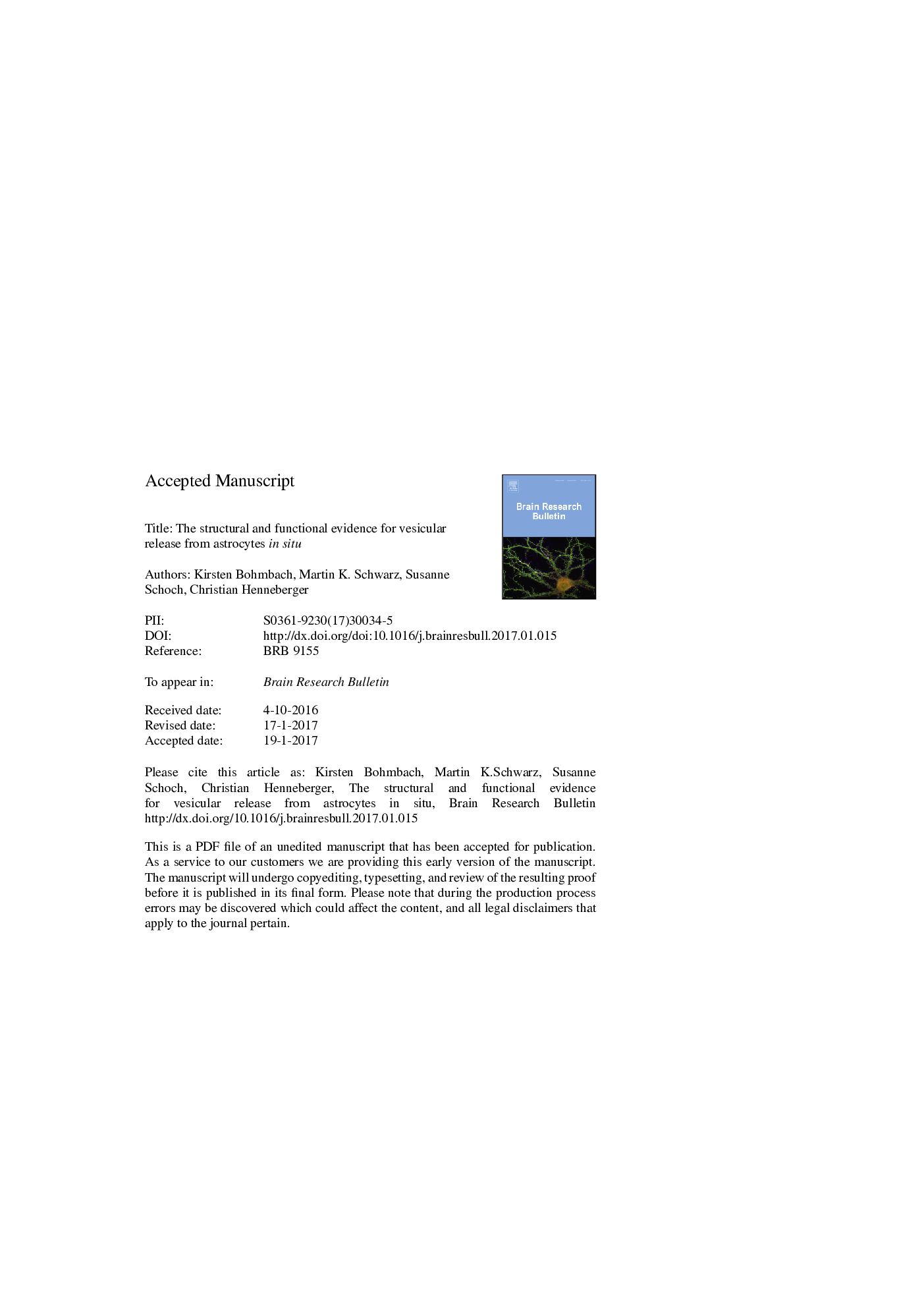| Article ID | Journal | Published Year | Pages | File Type |
|---|---|---|---|---|
| 8839052 | Brain Research Bulletin | 2018 | 27 Pages |
Abstract
The concept of the tripartite synapse states that bi-directional signalling between perisynaptic astrocyte processes, presynaptic axonal boutons and postsynaptic neuronal structures defines the properties of synaptic information processing. Ca2+-dependent vesicular release from astrocytes, as one of the mechanisms of astrocyte-neuron communication, has attracted particular attention but has also been the subject of intense debate. In neurons, regulated vesicular release is a strongly coordinated process. It requires a complex release machinery comprised of many individual components ranging from vesicular neurotransmitter transporters and soluble NSF attachment protein receptors (SNARE) proteins to Ca2+-sensors and the proteins that spatially and temporally control exocytosis of synaptic vesicles. If astrocytes employ similar mechanisms to release neurotransmitters is less well understood. The aim of this review is therefore to discuss recent experimental evidence that sheds light on the central structural components responsible for vesicular release from astrocytes in situ.
Keywords
GFAPNRXN1vesicular inhibitory amino acid transporterVesicular releaseVGLUTBoNTVAMPTeNTVesicular nucleotide transporterVMATSNAREVNUTRABVV-ATPaseVacuolar-type H+-ATPaseAstrocytestransmitter releasetetanus neurotoxinVesicular monoamine transportervesicular glutamate transporterRIMSynaptotagminSNAPActive zoneCazBotulinum neurotoxinVIAATRabies virusSNARE proteinsGlial fibrillary acidic proteinsynaptosomal-associated proteinSYTsoluble NSF attachment protein receptor
Related Topics
Life Sciences
Neuroscience
Cellular and Molecular Neuroscience
Authors
Kirsten Bohmbach, Martin K. Schwarz, Susanne Schoch, Christian Henneberger,
